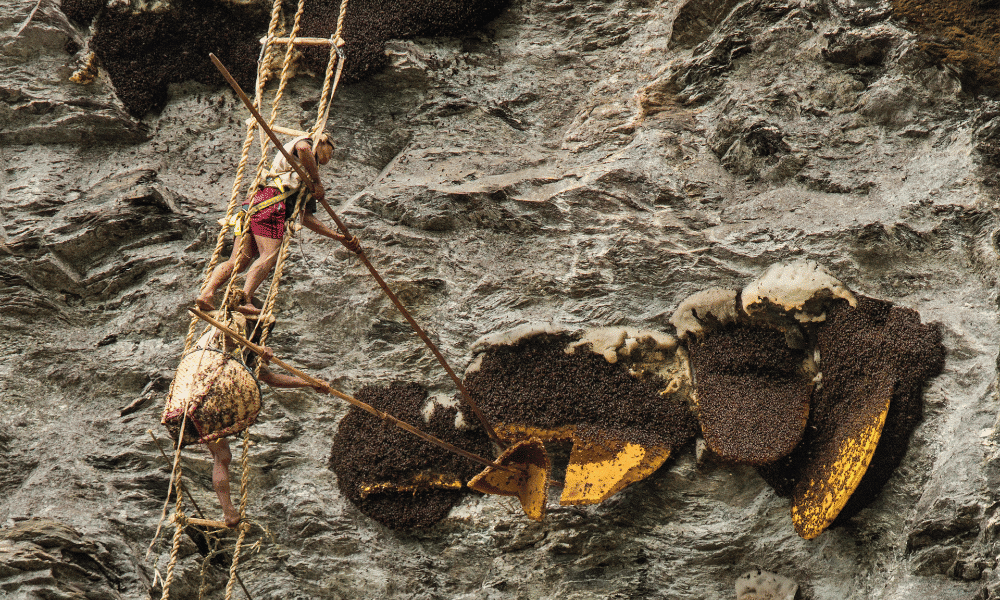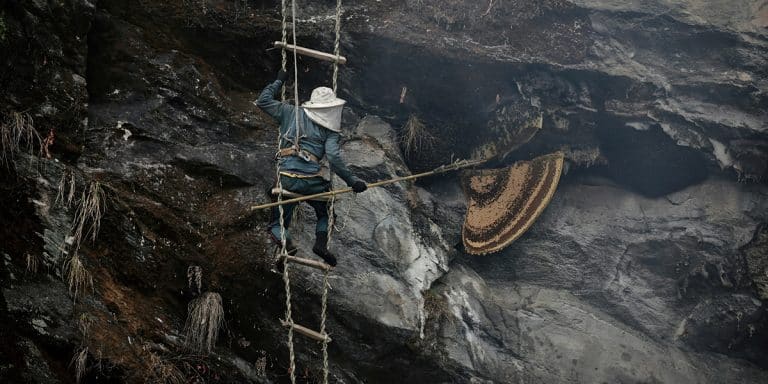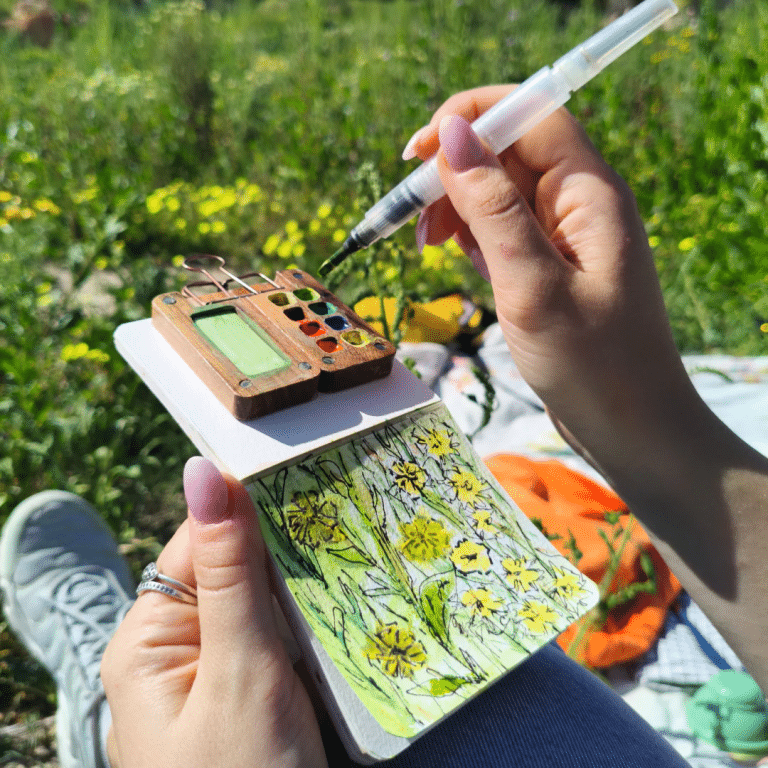High in the misty hills of Nepal’s Lamjung or Kaski districts, or in the rugged Turkish Black Sea mountains, local tribes have risked their lives for centuries harvesting one of nature’s strangest treasures: mad honey. For generations, this dangerous art of honey hunting has belonged to men alone.
But what happens when a woman takes that first step onto the ladder? Today, a handful of female mad honey hunters are rewriting a story once reserved for fathers, sons, and brothers. Their climb is more than physical — it’s a daring ascent against centuries-old gender roles in Himalayan beekeeping and beyond.
Could these female mad honey hunters change the very tradition they hold dear? And what does this mean for local culture, livelihoods, and the next generation of young girls watching them scale those cliffs?
The Tradition of Mad Honey Hunting
Mad honey is unlike any other honey on earth. Produced when bees gather nectar from certain wild rhododendron flowers, this amber liquid contains grayanotoxins — neurotoxins that, in small amounts, cause a light-headed buzz, and in larger doses can bring on hallucinations, nausea, or even heart issues. For centuries, it has been prized for medicinal and ceremonial uses across the Himalayas and parts of Turkey.
Traditional mad honey hunting is one of the most perilous jobs in the world. Every spring, men from tribes like Nepal’s Gurung people embark on multi-day journeys deep into remote forests. Armed with bamboo ladders, long sticks, and homemade ropes, they scale sheer cliffsides that can tower hundreds of feet above roaring rivers. They light smoky fires to drive the giant bees away and risk stings, falls, or worse — all to harvest this sweet, intoxicating treasure.
For generations, this skill has passed from father to son. It’s not just a way to make money; it’s a rite of passage, a sacred tradition bound up with animistic beliefs and blessings to mountain spirits. The image of a lone male hunter clinging to a cliffside is as iconic as it is enduring.
Meet the Women Breaking Barriers
In recent years, a quiet but powerful shift has begun in some honey-hunting communities. In Nepal’s remote villages, stories circulate about widows and daughters who, when their husbands or fathers could not work, stepped up to keep the harvest alive.
Take Maya Gurung (name changed for privacy), a mother of two in Kaski district. When her husband was injured and could no longer climb, she learned to handle the ropes and ladders herself. With the support of her father-in-law, she joined her brothers in the hunt — shocking elders but feeding her family when there was no other choice.
In parts of Turkey’s Black Sea region, too, younger women are showing an interest in what was once unthinkable. Some join male relatives on less perilous sections of the hunt, gathering honey from lower hives, learning to handle the bees, and carrying the harvest home. They are inspired by growing conversations around women empowerment, cultural preservation, and fair income for rural families.
Their stories are not yet common — but each woman who rises up that rope sets an example for others to follow.
How Is This Changing Local Traditions?
So, how do tight-knit communities — where tradition and identity are deeply linked — react to female mad honey hunters?
It depends. Some elders view it as a disruption to sacred custom. Honey hunting is more than work; it’s a ritual blessed by shamans and passed down through men. Seeing a woman on the ropes can stir fears that disrespecting tradition may anger local spirits — or simply invite gossip and judgment from neighbors.
Yet younger generations often see things differently. They recognize that these dangerous treks require skill, courage, and respect for the forest — qualities not limited to men. Many local leaders quietly acknowledge that when women hunt, they help preserve the practice. Without new generations willing to climb, some villages risk losing honey hunting altogether as young men migrate to cities for other work.
In this way, women honey hunters are not just defying gender roles in beekeeping — they may be safeguarding an ancient craft from extinction.
Challenges and Risks for Female Honey Hunters

The life of a mad honey hunter is hard enough. For women, the risks go beyond cliffs and bee stings. They face social obstacles, judgment, and sometimes outright pushback from elders who fear that changing old ways could unravel community bonds.
Physically, the work demands incredible strength and endurance. Climbing slippery cliffs with heavy ropes while avoiding aggressive giant bees is not for the faint-hearted. Some women begin by helping prepare fires, steady ropes, or tend to injured hunters before ever stepping onto the ladder themselves. Earning respect often means proving they can do everything a man does — and more.
Yet those who persist say the reward is not just the honey, but the pride of keeping an ancient livelihood alive and feeding their families on their own terms.
What Might the Future Look Like?
Could more women follow in these brave footsteps? Many experts think so. As stories of female mad honey hunters spread, they inspire others who may have thought “this isn’t my place” to imagine new possibilities.
Organizations focused on women empowerment and sustainable tourism are beginning to take notice. Some trekking companies now partner with communities to offer visitors a glimpse into honey hunting traditions — and sometimes even the chance to meet female honey hunters who share their stories.
If done thoughtfully, this shift could diversify income for rural families, protect delicate bee habitats, and keep cultural practices alive. But there’s a danger, too: traditions could become commodified, turned into performances for tourists rather than genuine rituals held in deep respect.
The question is whether local communities can strike a balance — supporting women who wish to climb, preserving sacred practices, and protecting their fragile forests and bees from over-harvesting.
When Women Climb, They Redefine What’s Possible
When we see female mad honey hunters clinging to sheer cliffsides, braving bees and gravity, it’s impossible not to feel awe. They are not just gathering honey; they are rewriting the rules of who gets to protect, preserve, and profit from their culture’s oldest traditions.
They remind us that traditions don’t have to break when they bend. Instead, they can grow stronger — more inclusive, more resilient — when new voices and hands join the climb.
o, Are Female Mad Honey Hunters Changing the Tradition?
The answer is a clear yes — and their impact is only just beginning. They are challenging old assumptions about gender roles in Himalayan beekeeping and rural economies. They’re inspiring girls to see that cliffs, ropes, and buzzing bees are not just a man’s world. And they’re showing their communities that preserving culture sometimes means reimagining it.
As long as they climb safely, with respect for ancient ways and modern needs, these women honey hunters may well be the future of mad honey itself.













